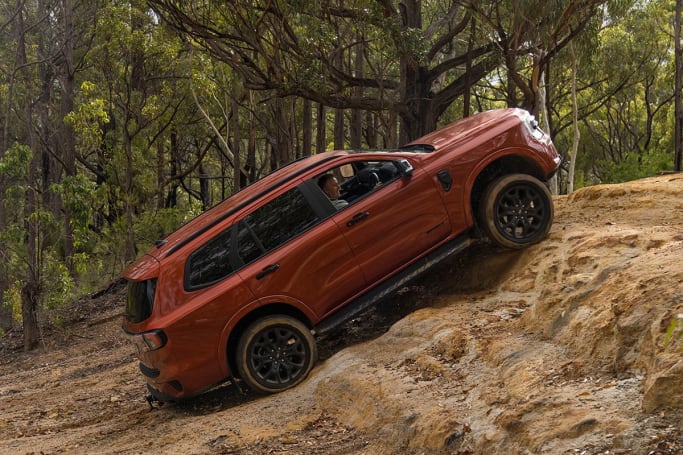
How much does it cost to replace a windscreen?
This used to be a simple question since most car windscreens were made from the...
Browse over 9,000 car reviews
.jpg)
A car’s suspension might seem like a lot of trouble to go to, but without it, a car would never be safe enough, comfortable enough or stable enough to be driven at much more than walking pace.
Think of it as a comparison between a pushbike with inflatable tyres (which act as the suspension in this case) and your first tricycle with its solid tyres.
Without suspension, your car would behave like the old three-wheeler, bouncing off every tiny bump or join in the road surface.
The broad idea of suspension (and this goes way beyond just cars) is that the part of any vehicle that the occupants ride in its isolated from the wheels as they cross whatever bumpy ground they encounter.
As well as making the ride at speed a lot more tolerable, having wheels that can move independently to the rest of the vehicle keeps them in contact with the road better.
And that means more grip and better handling and safety. And all of this is why auto suspension has become such a science.
That’s basically why cars have suspension, but it’s also why suspension of different types is fitted to almost anything that moves, be it a train, a plane (the landing gear has suspension) truck, mountain bike or even a horse-drawn cart.

By allowing the wheels to move up and down without upsetting the rest of the vehicle (too much), the whole thing moves more gracefully, comfortably and safely. And faster.
In the car world, a few suspension types have attained superiority. Basically, they involve a spring supporting the weight of the body, attached to the wheels (via the axles).
For many decades, the leaf spring was the spring of choice. It involves several, thin lengths of springy steel to be stacked together and attached to the car at either end of the spring-pack, while the axle rides in the middle of the spring.
The end result is a set-up that allows the axle (and wheels) to move up and down with the road’s bumps while allowing the car’s body to be less affected by those bumps.

The second popular method of suspending a car became prevalent more recently and is called a coil spring.
Again, it joins the axle to the body and, as the name suggests, is a coiled piece of spring-steel that does the same job as the leaf spring but in a different way.
By combining the coil spring and damper in one compact unit, the MacPherson strut is one of the most popular types of suspension but remains, fundamentally, a coil suspension arrangement.
Even more recently, we’ve started seeing carmakers opt for air springs which involve a sealed bag filled with compressed air replacing the steel spring.

Because air is a gas, car air suspension can be compressed and will return to its original shape when the load (from a bump) is released... just like a steel spring.
The other major theme is independent suspension. This is the difference between a solid axle where both wheels move together, or a system where each wheel is able to move independently.
So, if a front wheel hits a bump, it doesn’t also upset the other front wheel because it can move on its own.
Independent front suspension was the first move in this trend, while old designs tended to retain the solid, or live, rear suspension.
As the car-making world progresses, nearly all modern cars have independent suspension systems front and rear.
Beyond the springs, the other major components of what is car suspension include shock absorbers (dampers) the actual suspension arms that attach the wheels to the rest of the car and the bushings that help insulate the cabin from the worst of the wheels’ impact with the environment while still allowing suspension movement.
If you look at a car suspension diagram, you’ll see that bushings are present where the various components meet.
Bushings form the pivot or fulcrum for these parts. If these bushings wear or develop slack (which they do as a matter of course over time and kilometres) excess movement can make the car handle unpredictably and steer poorly.

Car suspension squeaks are often the first sign that this wear has begun. In fact, any odd noises, clunks, rattles or squeaks from under the car suggest your suspension needs to be looked at.
Another of the most common car suspension problems revolves around the shock absorbers. Without properly working shock absorbers car travel is a lot less safe and comfy.
That’s because as a car shock loses its ability to damp out the spring’s action, you can be left with a car that feels more like a pogo stick; one that continues to bounce long after the bump has passed. At which point, the tyres aren’t stuck to the ground as well as they should be. And that’s a problem.
It soon becomes pretty obvious that there are lots of different suspension components that all have important tasks.

Which is why you need to keep an eye on the condition of those bits you can see as well as the parts of suspension you can’t visually check.
That usually involves a car suspension service and there are plenty of car suspension specialists around who can do this.
The car suspension repair cost will be determined by the make and model and what’s actually wrong with it, but the total bill for a trashed vehicle suspension can easily run into thousands.
Also, when it comes to suspension car engineers are developing more and more complex systems, so having it cared for by a specialist and catching little problems before they become big ones is also important these days.










Comments